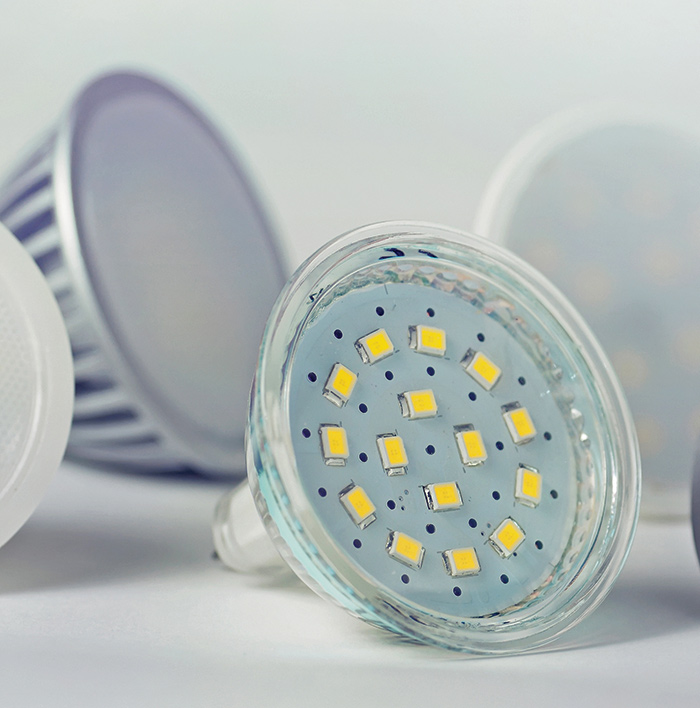LED technology has revolutionized lighting, but also added complications for jewelers in terms of color, performance and optics.

LEDs are both a blessing and a curse. A blessing because they help jewelers maximize the energy used, meet new electrical codes, illuminate jewelry with sparkle and save on maintenance costs. (The sustainability story associated with LEDs appeals both to millennials and Baby Boomers. If you save energy, you lessen the carbon dioxide emitted.) Yet, they are also a curse, because there is so much choice in terms of fixtures, quality and color temperature, as well as glare.
When LEDs were first introduced to jewelers, they fell in love with the high color temperatures (Kelvin), installing lamps as high as 5000K and 6000K. But they forgot about what humans, their customers, look like under these harsh colors. Now we consider 4000K to be the best average for illuminating both jewelry and customers (although note that today there are new LEDs on the market that intermix 3000K with 6000K, both in light rails and lamps, which are worth exploring).
Just as big a breakthrough is “color select,” which allows you to test the color temperature you want by dialing and setting the white temperature via a control panel. This has one great advantage if you like technology: You can change the color over the different categories of merchandise as you move it within your cases; so diamonds and platinum get a cooler light, colored stones and gold get a warmer one. With this option, you need to make sure the manufacturer you are working with has a uniform white from fixture to fixture. If you are considering dimming your LEDs, be sure to achieve the right level of light with no flicker. Only digital dimming can prevent this problem.
An LED is a bright dot — if you look right at an LED, there is glare. Light rails installed at the back of showcases must therefore have a well-designed light rail so that you can illuminate the jewelry but not your customer’s face. Some models of light rails rotate, while others have a shield — either works for eliminating the glare.
When you put a vertical strip of LEDs in a wallcase, make sure it has a good diffuser on it so you don’t get a reflection of bright dots in the back of the case (although some jewelers don’t mind those dots.) And if you retrofit existing track lights with LED bulbs, angle them so they illuminate the case and any reflective glare goes into the staff’s eyes, not the customer’s.
Advertisement

LEDs are superb at adding sparkle; they are not so good for rendering diamond color.
How do you implement LED lighting in your store? We suggest you test the color temperature of the LEDs you will be using; while the standard is 4000K, some people prefer a cooler look and some a warmer one.
LEDs are superb at adding sparkle. They are not so good for rendering diamond color. Fluorescent light is good at this and many fine jewelers selling high-end diamonds request it to add ambient lighting. Fluorescent lamps are best used in the 3500K range, which emits a neutral white (use as high efficiency lamps and ballast systems as possible).
LED makers are continuing to increase the light output, which means higher ceilings (even 10 or 11 feet) are now a design option.
What’s next for lighting? Controls that monitor the light output depending on the daylight available, occupancy in the room, and type of event (dimmer for parties). At the moment, this means a great deal of wiring connecting fixtures but in the fairly near future, it will likely be accomplished wirelessly. Stay tuned!
With your budget, take a rifle rather than a shotgun approach. Resolve to spend money on a few things and look at what else can be reused or refurbished. A few truly luxurious items in a space contribute greatly to the ambience.
Advertisement
Finally, to ensure that both your jewelry and clients look good, hire a lighting designer who understands how to bring out the sparkle and true color in diamonds.
Ruth Mellergaard, CID, FIIDA is a principal of GRID/3 International, an interior design firm based in New York City. Learn more about its services at grid3.com.
This article originally appeared in the June 2016 edition of INSTORE.